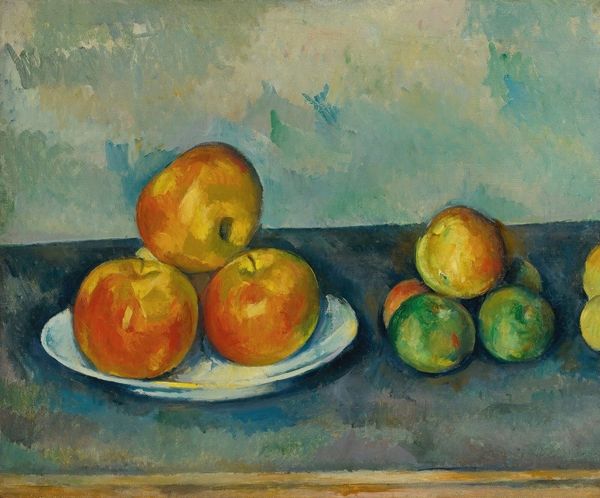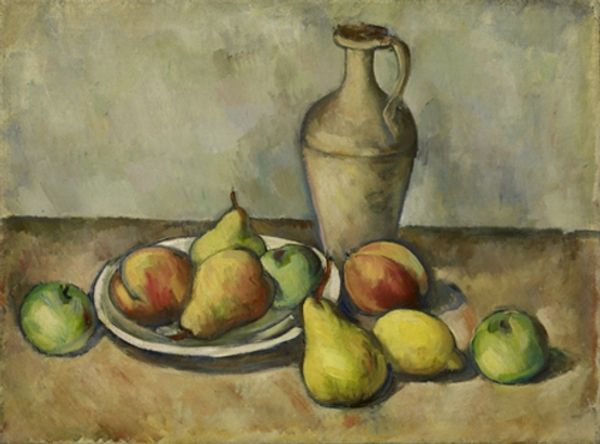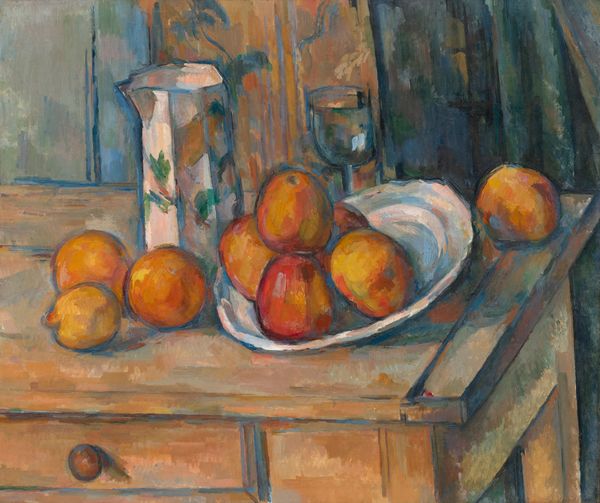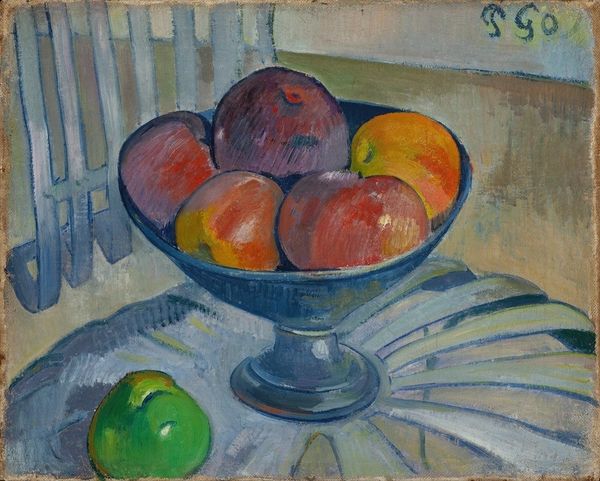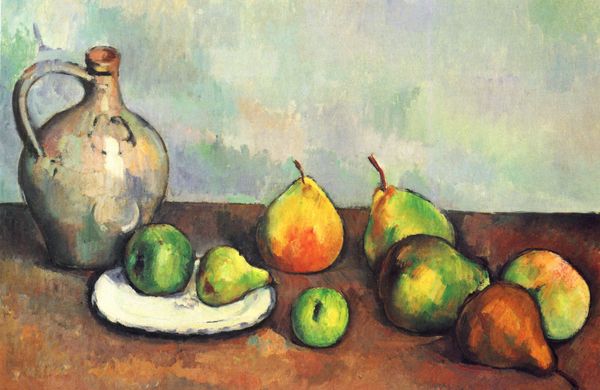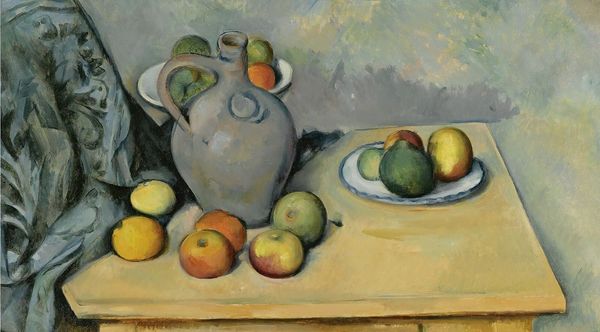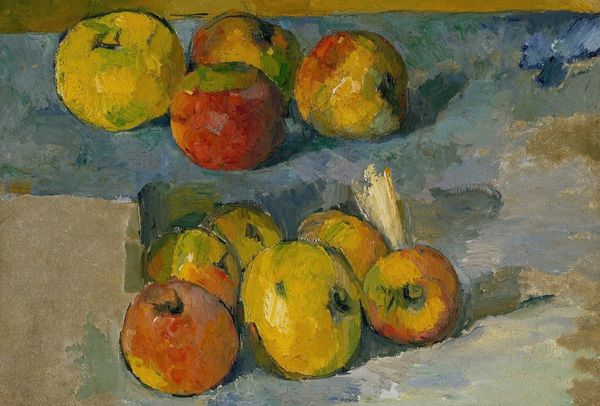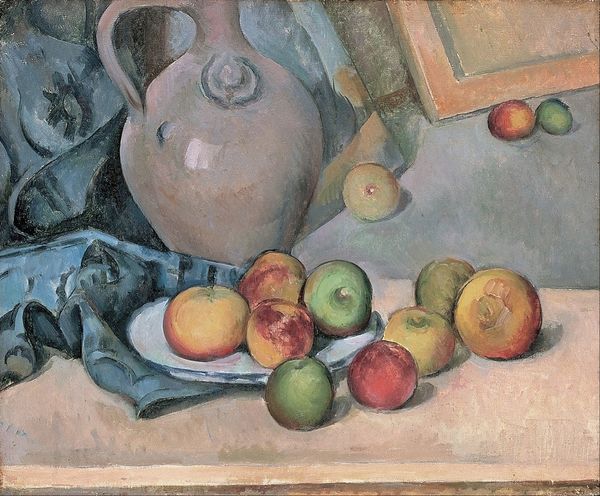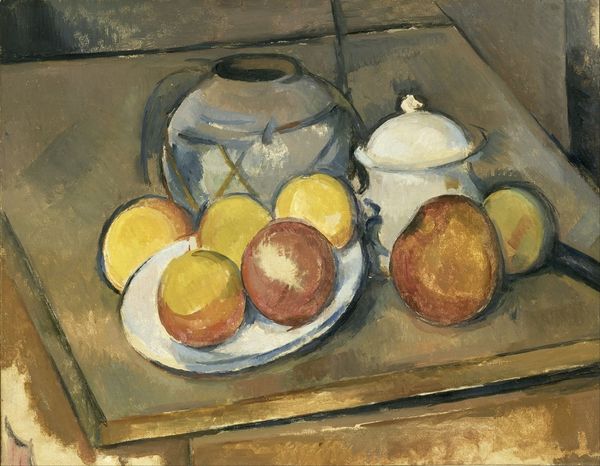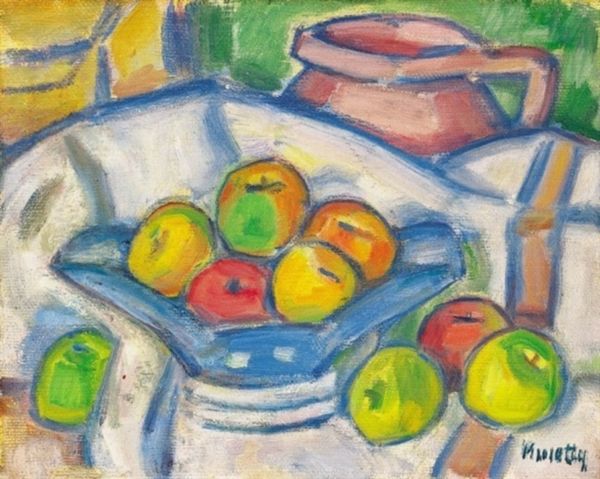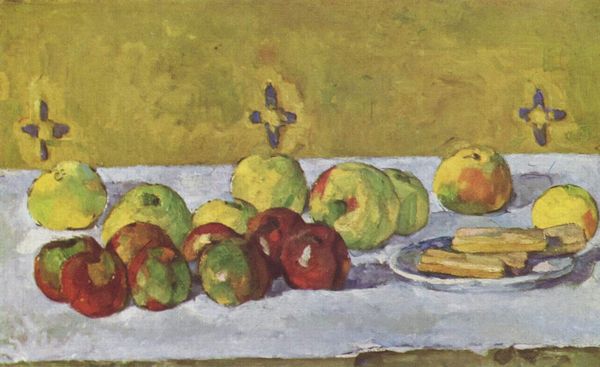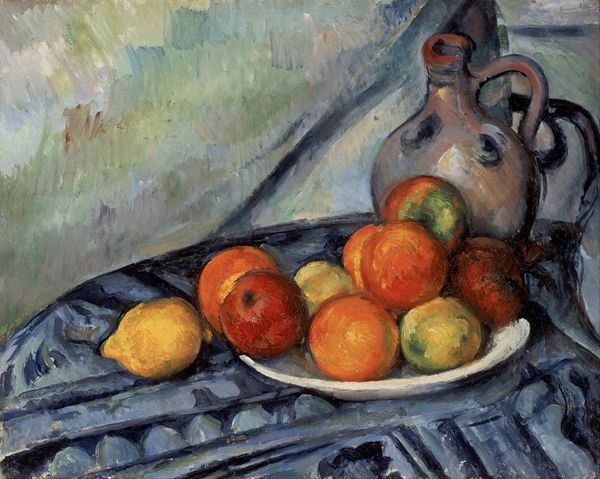
painting, oil-paint
#
gouache
#
painting
#
oil-paint
#
form
#
oil painting
#
post-impressionism
#
realism
Copyright: Public Domain: Artvee
Editor: Here we have Cézanne's *Nature morte; pommes et poires*, painted around 1888-1890. The materiality of the paint itself really stands out; you can see the thick, almost sculptural brushstrokes. What is particularly interesting about this painting to you? Curator: I'm drawn to how Cézanne subverts traditional still life painting. He moves beyond mere representation to focus on the actual process of perception. The visible brushstrokes and flattened perspective highlight the constructed nature of the image. Editor: Constructed how? Curator: Consider the labor involved in creating this scene. He is not just painting fruit; he is meticulously constructing form and space through layers of oil paint. He challenges our notion of painting as purely mimetic. We must think about what types of labor are visible in high art, and which types of manual labor are overlooked and marginalized. Editor: So, it's not just about the fruit itself, but how Cézanne is manipulating materials to create a new kind of visual experience? Curator: Precisely! He uses humble materials – oil paint, canvas – to investigate the very act of seeing. What do these readily-available materials mean for art production? He wants us to contemplate how an artist can change the landscape of "fine art" using rudimentary production. Where is the "hand" visible, and why does this labor elevate the painting above more quotidian materials? Editor: I never thought about it that way. I guess I was too focused on what was being depicted and not *how* it was being depicted. It makes you consider the whole commercial process involved! Thanks! Curator: Absolutely! Remember, analyzing the materiality and methods is key to understanding artistic intention and its place in broader cultural trends of production.
Comments
No comments
Be the first to comment and join the conversation on the ultimate creative platform.
